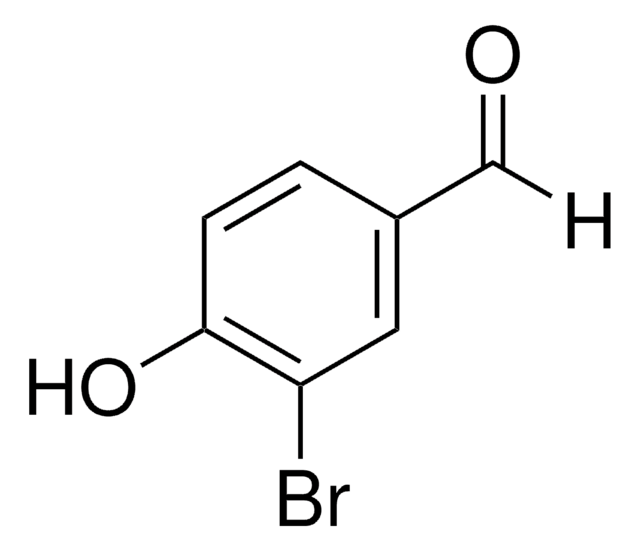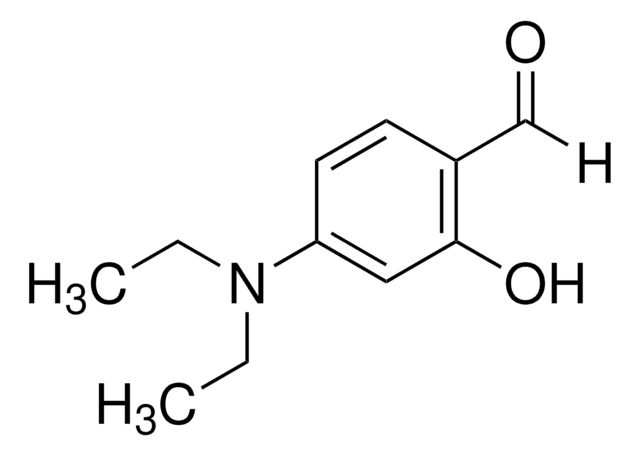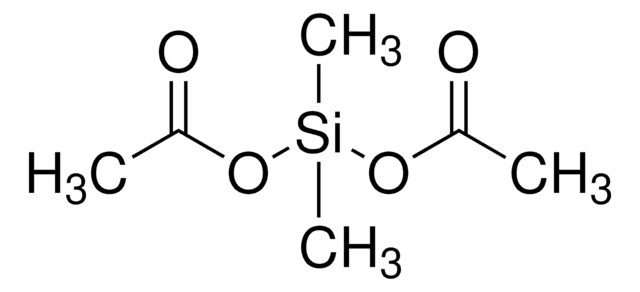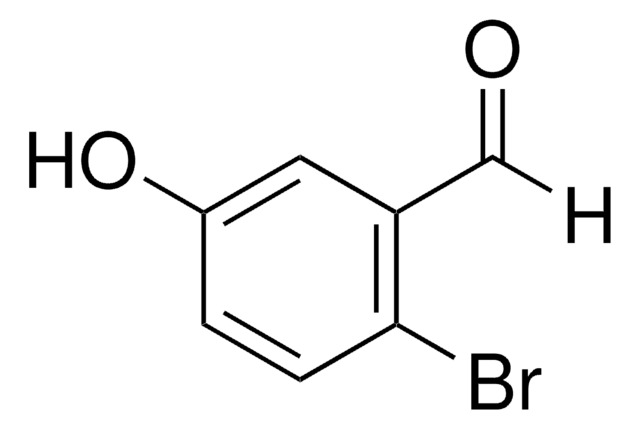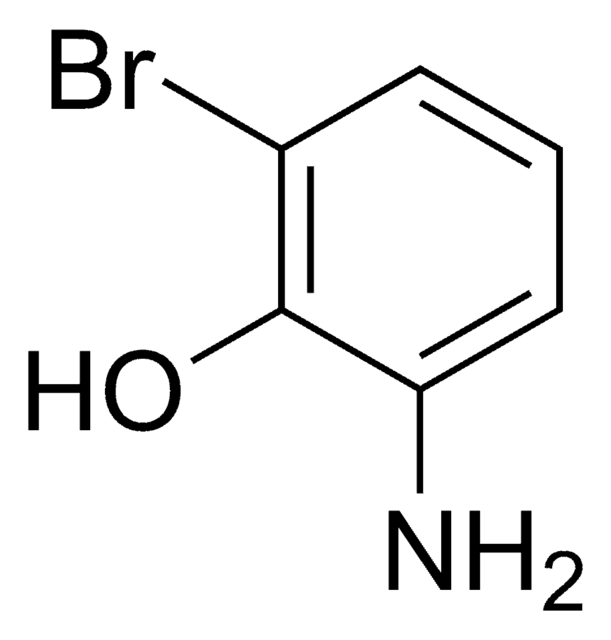453137
3,5-Dibromo-4-hydroxybenzaldehyde
98%
Iniciar sesiónpara Ver la Fijación de precios por contrato y de la organización
About This Item
Fórmula lineal:
Br2C6H2(OH)CHO
Número de CAS:
Peso molecular:
279.91
Número CE:
Número MDL:
Código UNSPSC:
12352100
ID de la sustancia en PubChem:
NACRES:
NA.22
Productos recomendados
Nivel de calidad
Análisis
98%
mp
181-185 °C (lit.)
grupo funcional
aldehyde
bromo
cadena SMILES
Oc1c(Br)cc(C=O)cc1Br
InChI
1S/C7H4Br2O2/c8-5-1-4(3-10)2-6(9)7(5)11/h1-3,11H
Clave InChI
SXRHGLQCOLNZPT-UHFFFAOYSA-N
¿Está buscando productos similares? Visita Guía de comparación de productos
Categorías relacionadas
Palabra de señalización
Warning
Frases de peligro
Consejos de prudencia
Clasificaciones de peligro
Eye Irrit. 2 - Skin Irrit. 2 - STOT SE 3
Órganos de actuación
Respiratory system
Código de clase de almacenamiento
11 - Combustible Solids
Clase de riesgo para el agua (WGK)
WGK 3
Punto de inflamabilidad (°F)
Not applicable
Punto de inflamabilidad (°C)
Not applicable
Equipo de protección personal
dust mask type N95 (US), Eyeshields, Gloves
Elija entre una de las versiones más recientes:
¿Ya tiene este producto?
Encuentre la documentación para los productos que ha comprado recientemente en la Biblioteca de documentos.
Huirong Zhang et al.
PloS one, 12(10), e0185783-e0185783 (2017-10-04)
Sexually transmitted Chlamydia trachomatis is an extremely common infection and often leads to serious complications including infertility and pelvic inflammatory syndrome. Several broad-spectrum antibiotics are currently used to treat C. trachomatis. Although effective, they also kill beneficial vaginal lactobacilli. Two
Synthesis of 3, 4, 5-Trimethoxybenzaldehyde.
Manchand PS, et al.
Synthetic Communications, 20(17), 2659-2666 (1990)
An expeditious synthesis of syringaldehyde from para-cresol.
Tripathi AK, et al.
Indian J. Chem. B, 49(3), 379-379 (2010)
Mengting Yang et al.
Environmental science & technology, 47(19), 10868-10876 (2013-09-13)
Using seawater for toilet flushing may introduce high levels of bromide and iodide into a city's sewage treatment works, and result in the formation of brominated and iodinated disinfection byproducts (DBPs) during chlorination to disinfect sewage effluents. In a previous
Zhenxuan Zhang et al.
Water research, 170, 115283-115283 (2019-11-19)
Halogenated aromatic disinfection byproducts (DBPs) are a new group of emerging DBPs identified recently. They have been detected in disinfected drinking water, wastewater effluents, recreational water and oil/gas produced water, at concentrations of ng/L to μg/L in general. Previously studies
Nuestro equipo de científicos tiene experiencia en todas las áreas de investigación: Ciencias de la vida, Ciencia de los materiales, Síntesis química, Cromatografía, Analítica y muchas otras.
Póngase en contacto con el Servicio técnico